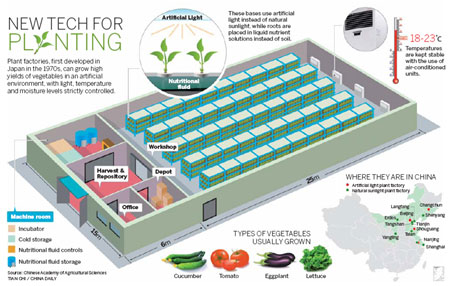
Inadequate distribution is the number one roadblock preventing us from having a sustainable and effective food system. Urban farming is one solution but research suggests that our urban food consumption has reached such high levels that the impact would be minimal. Dr. Dickson Despommier started exploring this subject years ago.
In 1999, students in one of Despommier’s classes decided to explore the potential of rooftop agriculture in New York City. The results of their calculations were depressing: even if all of the city’s residential rooftops were converted to rice paddies, the resulting crop would provide only two percent of Manhattan residents’ caloric needs.
It is difficult to imagine how we might solve this problem without seriously increasing the density of urban farms. Speaking with Dr. Despommier about this topic last week I asked “Why don’t we see more dense hydroponic warehouse farms?”. He responded that they are certainly around, albeit less in North America. “Just Google ‘plant factory’ and you will see just how many there are in Japan and China”. I did just that and the results were quite astonishing.
Japan has been using dense-factory-style hydroponic farms to market produce that is radiation free (a popular added-value product for many Japanese). China is following suite with the powerful incentive of its enormous population. Check out these mind-boggling images of plant factories and the future of farming that is already here.

A man works at a plant factory at Ozu Corporation on June 2, 2009 in Tokyo, Japan. Vegetables produced in the plant factories have completely controlled lighting, temperature, humidity and water, that enables the growth of safe foods and guarantees stable production throughout the year with stable quality. It uses no agricultural chemicals as there are no insects inside the factories therefor the food is safe and clean without washing and gives less waste. The plant factories are expected to solve some of the issues which Japanese agriculture is facing, the average age of agricultural worker in Japan is 65 and only 5% are under 40 years old.


A Chinese plant factory design.

Many of us probably cannot help feeling like these plant factories are some sort of abomination against nature. Nevertheless, we cannot deny the facts: we are in the midst of a global food crisis and we need to integrate quality food production into our urban infrastructure. Controlled environment agriculture is a viable solution that could be implemented today. Most cities have plenty or degrading or unused warehouse space in peri-urban areas that could be utilized to grow food.

Lighting and powering these factories remains the primary obstacle. Once renewable energy sources improve in their effectiveness and decline in cost, this is likely to be resolved. My question is about another problem: how could food from plant factories be effectively marketed to you? Would you feel comfortable buying food from such a source? Why or why not?